Two equal and opposite point forces applied at mid- points of the ends of a rod of square cross shown. Consider the dotted section ABCD. If the rod is cut across this Gloss section, the force exerted by the right part of the rod on left part across this cross section is
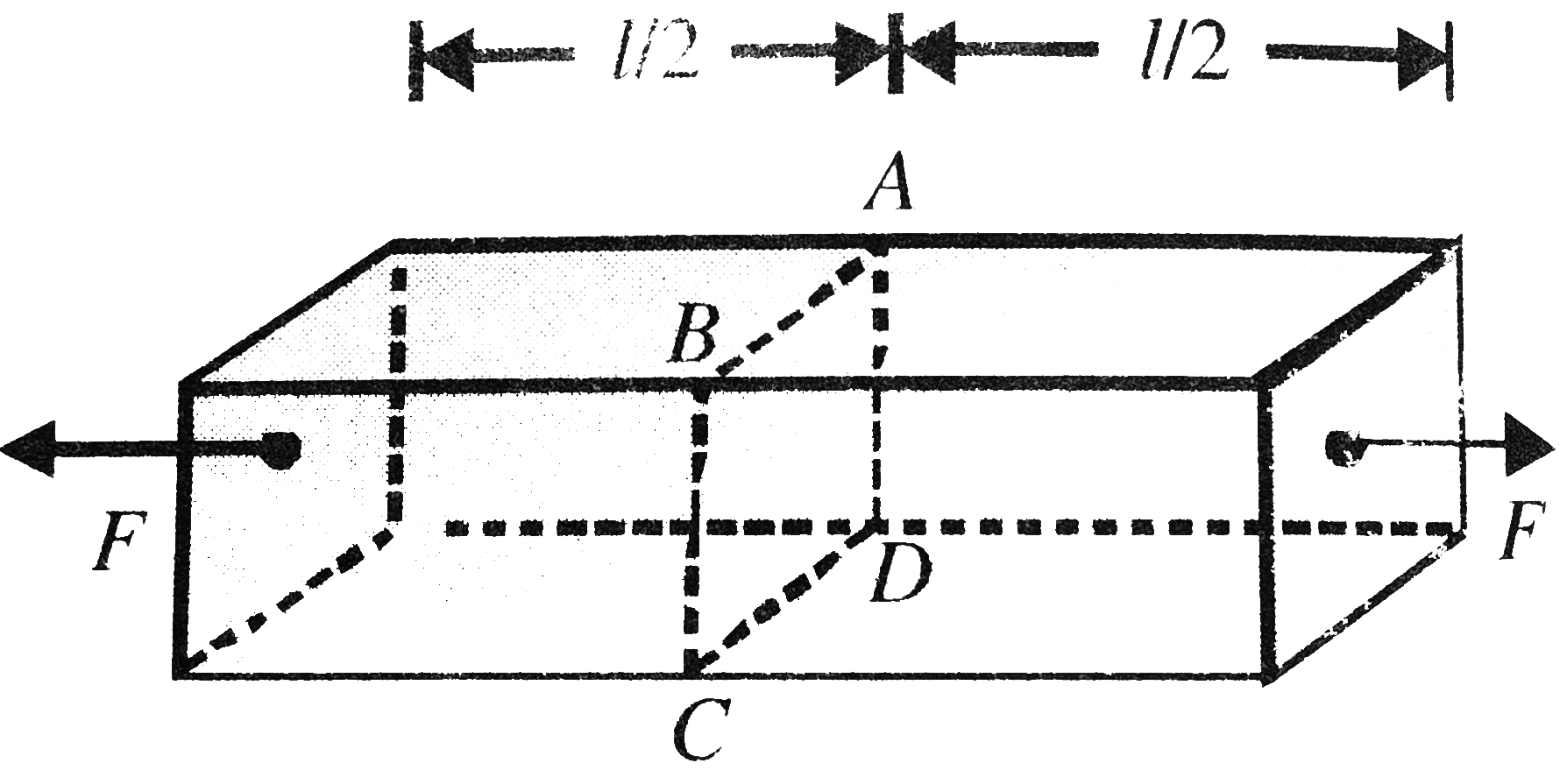
acting at point passing through cross section acting at point passing through cross section ABCD
acting at a point but not passing through the centre of cross section ABCD
uniformly distributed across the cross section ABCD
non-uniformly distributed across the cross section ABCD
The correct Answer is:C
As already discussed in key concepts, if the cut is not very near to end of the bar, the internal developed force is distributed uniformly over the cross section.
Topper's Solved these Questions
- BOOK - CENGAGE PHYSICSCHAPTER - PROPERTIES OF SOLIDS AND FLUIDSEXERCISE - Multiple Correct17videos
PROPERTIES OF SOLIDS AND FLUIDS
- BOOK - CENGAGE PHYSICSCHAPTER - PROPERTIES OF SOLIDS AND FLUIDSEXERCISE - Assertion- Reasoning13videos
PROPERTIES OF SOLIDS AND FLUIDS
- BOOK - CENGAGE PHYSICSCHAPTER - PROPERTIES OF SOLIDS AND FLUIDSEXERCISE - Subjective16videos
PROPERTIES OF SOLIDS AND FLUIDS
- BOOK - CENGAGE PHYSICSCHAPTER - NEWTON'S LAWS OF MOTION 2EXERCISE - Integer type1videos
NEWTON'S LAWS OF MOTION 2
- BOOK - CENGAGE PHYSICSCHAPTER - RIGID BODY DYNAMICS 1EXERCISE - Integer11videos
RIGID BODY DYNAMICS 1
Similar Questions
Two equal opposite forces each of magnitude F is applied along a rod of transverse sectional are A . The normal stress to a section PQ inclined θ to transverse section is -
View SolutionTwo equal and opposite forces F and −F act on a rod of unifrom cross-sectional ara A, as shown in the figure. Find the (i) shearing (ii) longitual stress on the section AB.
 View Solution
View Solution
Knowledge Check
- Question 1 - Select One
In the figure shown, forces of equal magnitude are applied to the two ends of a uniform rod. Consider A as the cross-sectional area of the rod. For this situation, mark out the incorrect statements.
 AThe rod is in compressive stress.BThe numerical value of stress developed in the rod is equal to F/A.CThe stress is defined as internal force developed at any cross section per unit area.Dnone of these
AThe rod is in compressive stress.BThe numerical value of stress developed in the rod is equal to F/A.CThe stress is defined as internal force developed at any cross section per unit area.Dnone of these - Question 2 - Select One
Two forces F1 and F2 are applied at the ends of a metal rod of Yougn's Modulus Y, length l as shown.
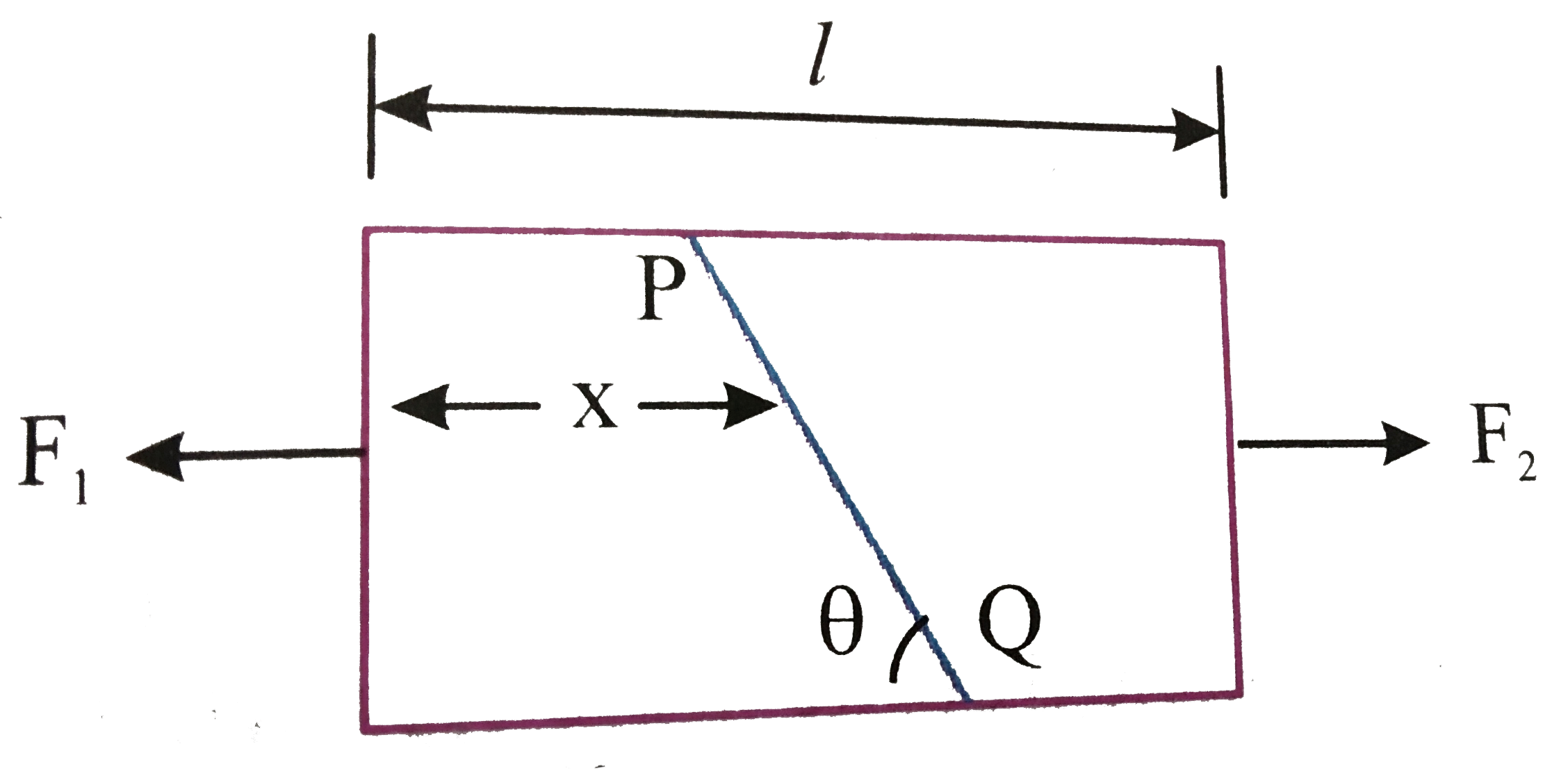
Longitudinal stress at the given cross-section PQ if the cross-section of the rod is A0 and tension is TATsin2θA0BTsinθA0CTsinθ2A0D2Tsinθ2A0 - Question 3 - Select One
Two rods are connected as shown. The rods are of same length and same cross sectional area. In steady state, the temperature (θ) of the interface will be -
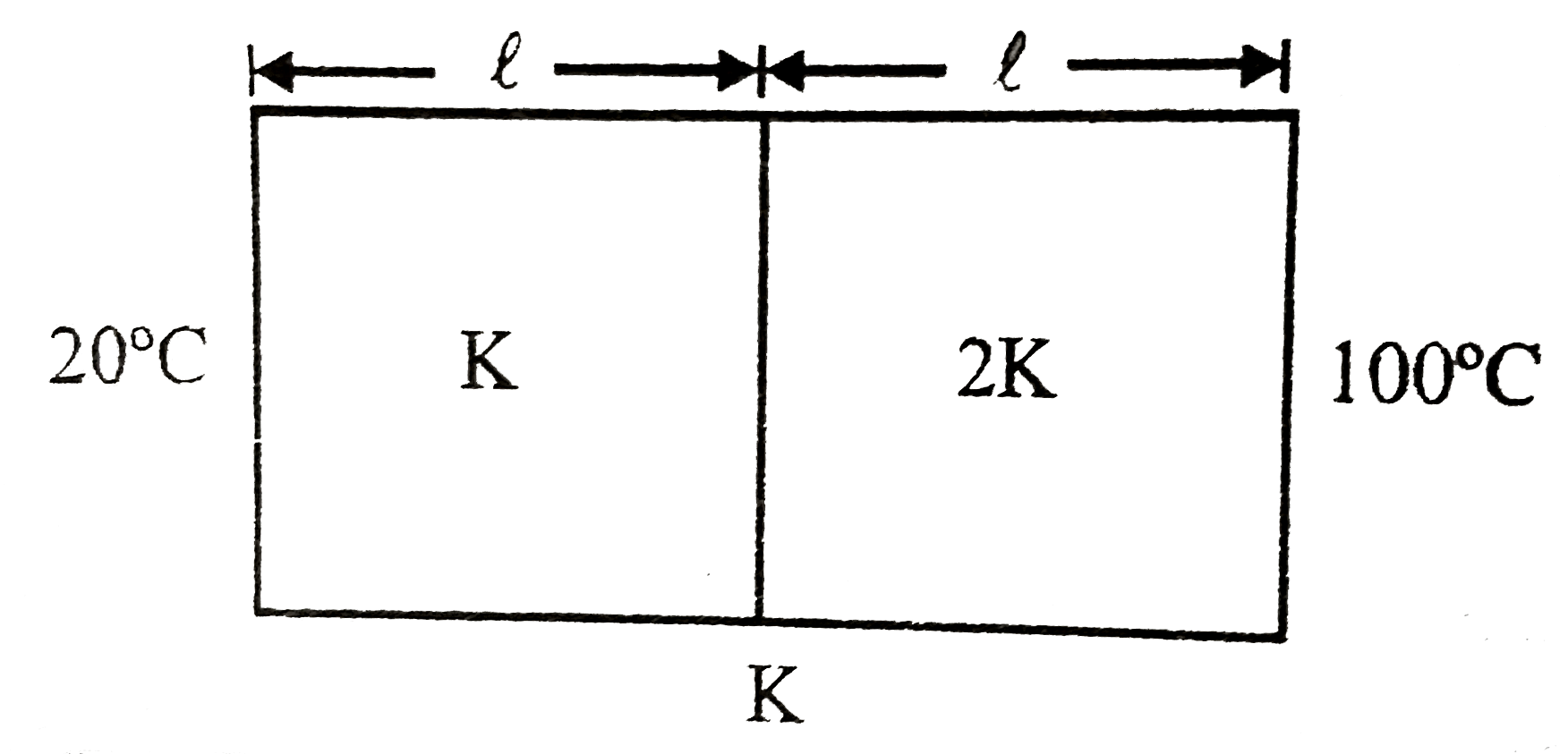 A60∘CB73.3∘CC46.7∘CD37.3∘C
A60∘CB73.3∘CC46.7∘CD37.3∘C
Find the temperature of junction at B, if each rod has equal area of cross-section.
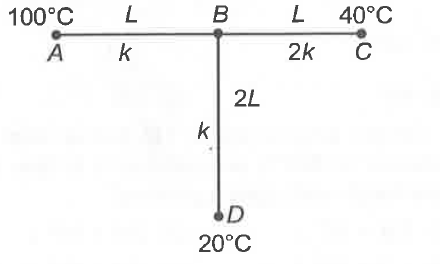 View Solution
View SolutionThree rods of same material and of equal cross sectional area and length have been connected together as shown in the figure. The temperature of the junction of the rods approximately is
View SolutionA semicircular rods is joined at its end to a straight rod of the same material and the same cross-sectional area. The straight rod formss a diameter of the other rod. The junction are maintaine dat different temperature. Find the ratio of the heat transffered through a cross section of the straigh rod in a given time.
View SolutionThe bending of an elastic rod is described by the elastic curve passing through centres of gravity of rod's cross-sections. At small bendings the equation of this curve takes the form
N(x)=EId2ydx2,
where N(x) is the bending moment of the elastic forces in the cross-section corresponding to the x coordinate, E is Young's modulus, I is the moment of inertia of the cross-section relative to the axis pasing through the neutral layer (I=∫z2dS, figure)
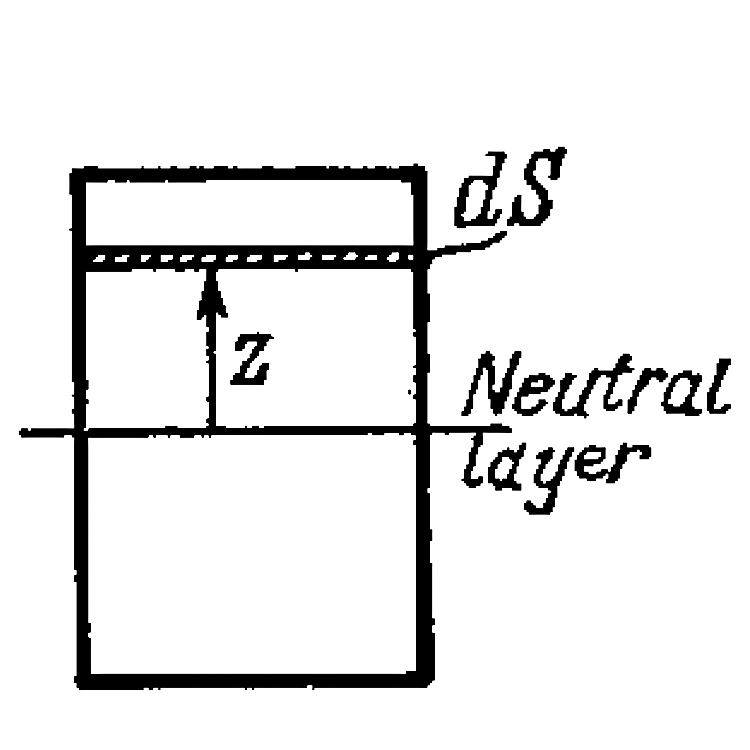
Suppose one end of a steel rod of a square cross-section with side a is embedded into a wall, the protruding section being of length l (figure). Assuming the mass of the rod to be negligible, find the shape of the elastic curve and the deflection of the rod λ, if its end A experiences
(a) the bending moment of the couple N0, ,
(b) a force F oriented along the y axis.
 View Solution
View SolutionA compressive force, F is applied at the two ends of a long thin steel rod. It is heated, simultaneously, such that its temeprature increass by ΔT. The net change in its length is zero. Let l be the length of the rod, A its area of cross-section, Y its Young's modulus, and α its coefficient of linear expansion. Then, F is equal to
View Solution

